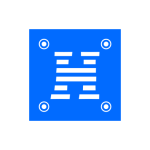最新下载
热门教程
- 1
- 2
- 3
- 4
- 5
- 6
- 7
- 8
- 9
- 10
简单的Thinkphp快速入门教程
时间:2014-12-12 编辑:简简单单 来源:一聚教程网
简单普及一下MVC [模型层M,控制层C,视图层V]
视图
视图是用户看到并与之交互的界面。
模型
模型表示企业数据和业务规则。
控制器
控制器接受用户的输入并调用模型和视图去完成用户的需求
第一个小修改
Application\Home\Controller (Controller 字面理解我们也知道这个是控制层 MVC 的C)
IndexController.class.php
修改$this->show();里的内容
还是这个文件
public function hello(){
echo ‘hello,thinkphp!’;
}
访问
http://localhost/thinkphp/Home/Index/hello
就出现了hello….
后置策略,就是在文件输出以后,继续执行。
前置对应的就是_before_hello()
public function _after_hello(){
echo 'after
';
}
hello,thinkphp!after
新建业务模块
/thinkphp/目录下直接建立一个文件叫admin.php
// 检测PHP环境
if(version_compare(PHP_VERSION,'5.3.0','<')) die('require PHP > 5.3.0 !');
define('THINK_PATH','./ThinkPHP/');
// 开启调试模式 建议开发阶段开启 部署阶段注释或者设为false
define('APP_DEBUG',True);
// 定义应用目录
define('APP_PATH','./admin/');
define('APP_NAME','admin');
// 引入ThinkPHP入口文件
require './ThinkPHP/ThinkPHP.php';
// 亲^_^ 后面不需要任何代码了 就是如此简单
程序将自动创建admin文件夹,并存放所有需要的文件目录
进入admin的控制模块找到文件 IndexController.class.php
admin\Home\Controller
$this->show('
:)
欢迎使用 ThinkPHP!
[ 您现在访问的是Home模块的Index控制器 ]
屏蔽以上信息
加上一句
$this->display();
\thinkphp\admin\Home\View\Index (View 视图层)
这里目录下 搞一个index.html
随便写点
就好了。
模板赋值
IndexController.class.php里
$this->assign(‘name’,'月小升’);
$this->display();
\thinkphp\admin\Home\View\Index\index.html
我是:{$name}
就能显示了。
学一点数据库的配置
thinkphp\Application\Home\Conf
下的文件config.php
return array(
//'配置项'=>'配置值'
// 添加数据库配置信息
'DB_TYPE' => 'mysql', // 数据库类型
'DB_HOST' => 'localhost', // 服务器地址
'DB_NAME' => 'thinkphp', // 数据库名
'DB_USER' => 'root', // 用户名
'DB_PWD' => '', // 密码
'DB_PORT' => 3306, // 端口
'DB_PREFIX' => 'think_', // 数据库表前缀
);
public function hello(){
echo 'hello,thinkphp!';
}
改成
public function hello(){
echo 'hello,thinkphp!';
$Data = M('User'); // 实例化Data数据模型
$this->data = $Data->select();
//$this->display();
print_r($this->data);
}
数据库建立一个表think_user
执行http://localhost/thinkphp/Home/Index/hello
hello,thinkphp!Array ( [0] => Array ( [id] => 1 [name] => ghj [pwd] => 123456 ) ) after
读取原生SQL
echo M("User")->getLastSql();
执行原生SQL
使用原生SQL很简单,我们甚至不需要实例化任何的模型,例如:
$Model = new Model(); // 实例化一个空模型
下面的方法是等效的
$Model = D(); 或者 $Model = M();
// 下面执行原生SQL操作
$Model->query('select * from think_user where status=1');
$Model->execute('update think_user set status=1 where id=1');
如果你实例化了某个模型,仍然可以执行原生SQL操作,不受影响,例如:
$User = D('User');
$User->query('select * from think_user where status=1');
$User->execute('update think_user set status=1 where id=1');
-
上一个: CI框架中PHP正则(不用转义)做法
-
下一个: 【收藏】php生成中文汉字首拼音实用类
相关文章
- php事务回滚简单实现方法示例 08-03
- 简单谈谈PHP中的trait 05-04
- 简单分析PHP中序列化用法介绍 08-27
- PHP中简单实现数学组合算法 01-09
- PHP新手算法 九九乘法表简单代码 10-30
- 一道简单的PHP笔试题(进阶必备) 09-12














